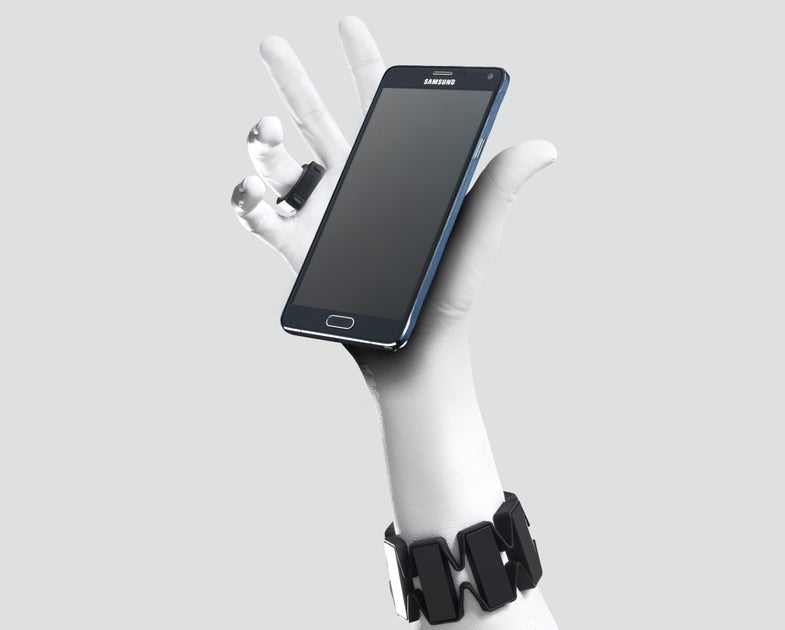Control Your Smartphone With The Wave Of A Hand
Gesture control technology is going mobile

We may earn revenue from the products available on this page and participate in affiliate programs. Learn more ›
In 2010, Microsoft popularized gesture controls with the release of the Kinect. In its first 60 days on sale, the device sold 133,000 units per day, a Guinness World Record. Three years later, Leap Motion brought the same capabilities to personal computers. But both devices required stationary sensors to perceive movements, so users couldn’t stray too far. Now, a new set of devices—outfitted with ultrasound, electromyography (EMG) sensors, and inertial sensors—are allowing the use of touchless interfaces anywhere.
Nod Labs
Polite or no, pointing is a universal human gesture, so Nod Labs decided to leverage it. The Nod ring includes inertial sensors, such as accelerometers and gyroscopes, that enable pixel-level control on any interface. That means smartphones, tablets, laptops, and TVs can be controlled with the wave of a finger, or for more complex commands, two or three fingers. $149
Elliptic Labs
Instead of building hardware, Elliptic Labs focused on software. Its technology prompts smartphone speakers to emit high-frequency sound waves. When a user moves his or her hand over the screen, a microphone picks up the reflected sound waves and translates them into a command. The company is now working with manufacturers to optimize speakers for better accuracy.
Thalmic Labs
Myo, made by Thalmic Labs, is worn on the forearm. It uses EMG sensors to pick up the electrical signals produced when your brain sends a command to your fingers. Software interprets signal patterns as gestures, such as making a fist, snapping your fingers, or raising your arm. Myo works with many popular Bluetooth-enabled devices right out of the box. $199
This article was originally published in the February 2015 issue of Popular Science, under the title “Gesture Control For Mobile Devices.”